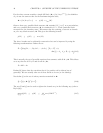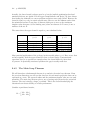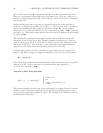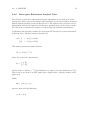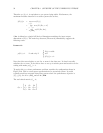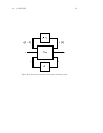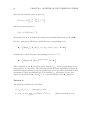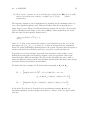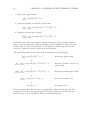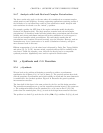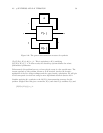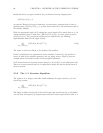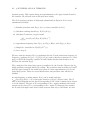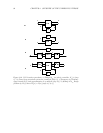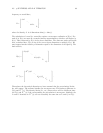56 CHAPTER 2. OVERVIEW OF THE UNDERLYING THEORY
i) State-space upper bound:
inf
D
s
∈D
s
σ
max
[D
s
G
ss
D
−1
s
] < 1;
ii) Frequency domain, constant D, upper bound:
inf
D
p
∈D
p
max
ω∈[0,2π]
σ
max
[D
p
F
u
(G
ss
, e
ω
I
nx
)D
−1
p
] < 1;
iii) Frequency domain upper bound:
max
ω∈[0,2π]
inf
D
p
∈D
p
σ
max
[D
p
F
u
(G
ss
, e
ω
I
nx
)D
−1
p
] < 1.
In both the state-space and frequency domain, constant D, upper bound, a single D
scale is selected to guarantee robust performance over all frequencies. These two tests
(items i)andii) above) are equivalent. In the frequency domain upper bound test
(item iii)) a different D-scale is selected at each frequency.
The relationship between all of these tests is summarized by the following:
inf
D
s
∈D
s
σ
max
[D
s
G
ss
D
−1
s
] < 1 State-space upper bound
inf
D
p
∈D
p
max
ω∈[0,2π]
σ
max
[D
p
F
u
(G
ss
, e
ω
I
nx
)D
−1
p
] < 1 Frequency domain, constant D,
upper bound
⇓
max
ω∈[0,2π]
inf
D
p
∈D
p
σ
max
[D
p
F
u
(G
ss
, e
ω
I
nx
)D
−1
p
] < 1 Frequency domain upper bound
⇓
max
ω∈[0,2π]
µ
∆
p
[F
u
(G
ss
, e
ω
I
nx
)] < 1 Frequency domain µ test
µ
∆
s
[G
ss
] < 1 State-space µ test
In the two cases where there are one way implications, there are real gaps. We have
already seen that there is a gap between the frequency domain µ test and its upper
bound for four or more full blocks. This is a computational issue.



